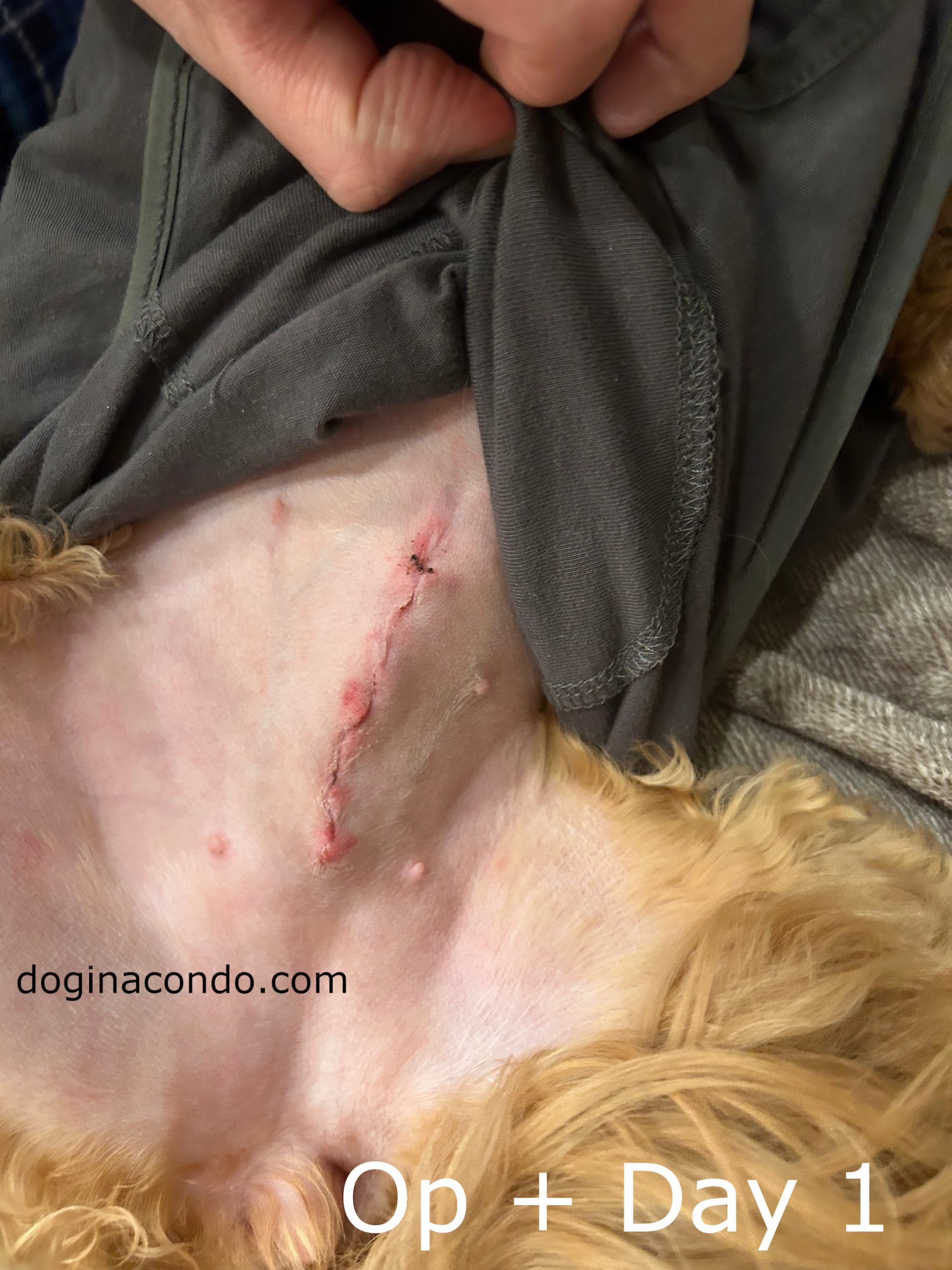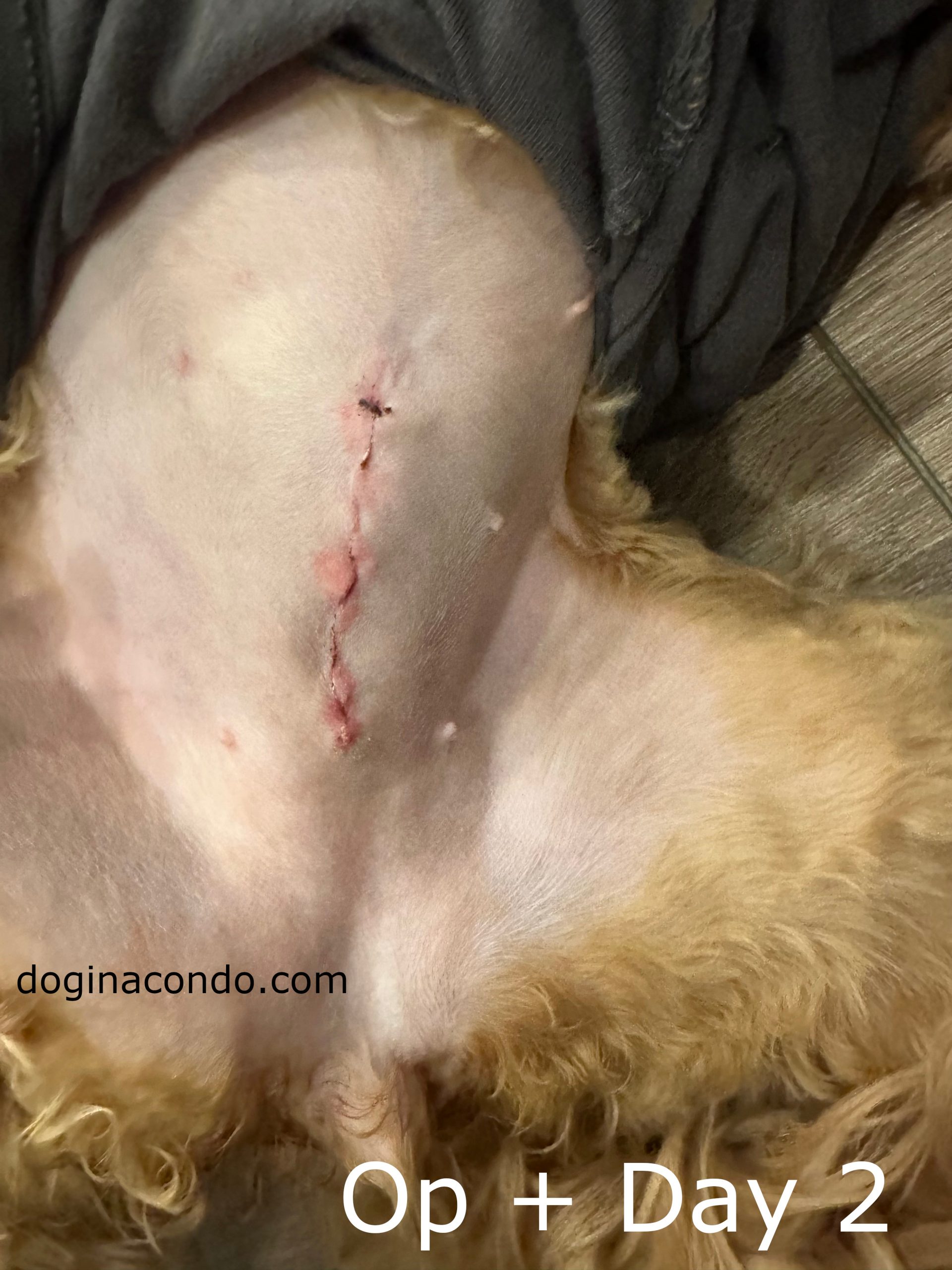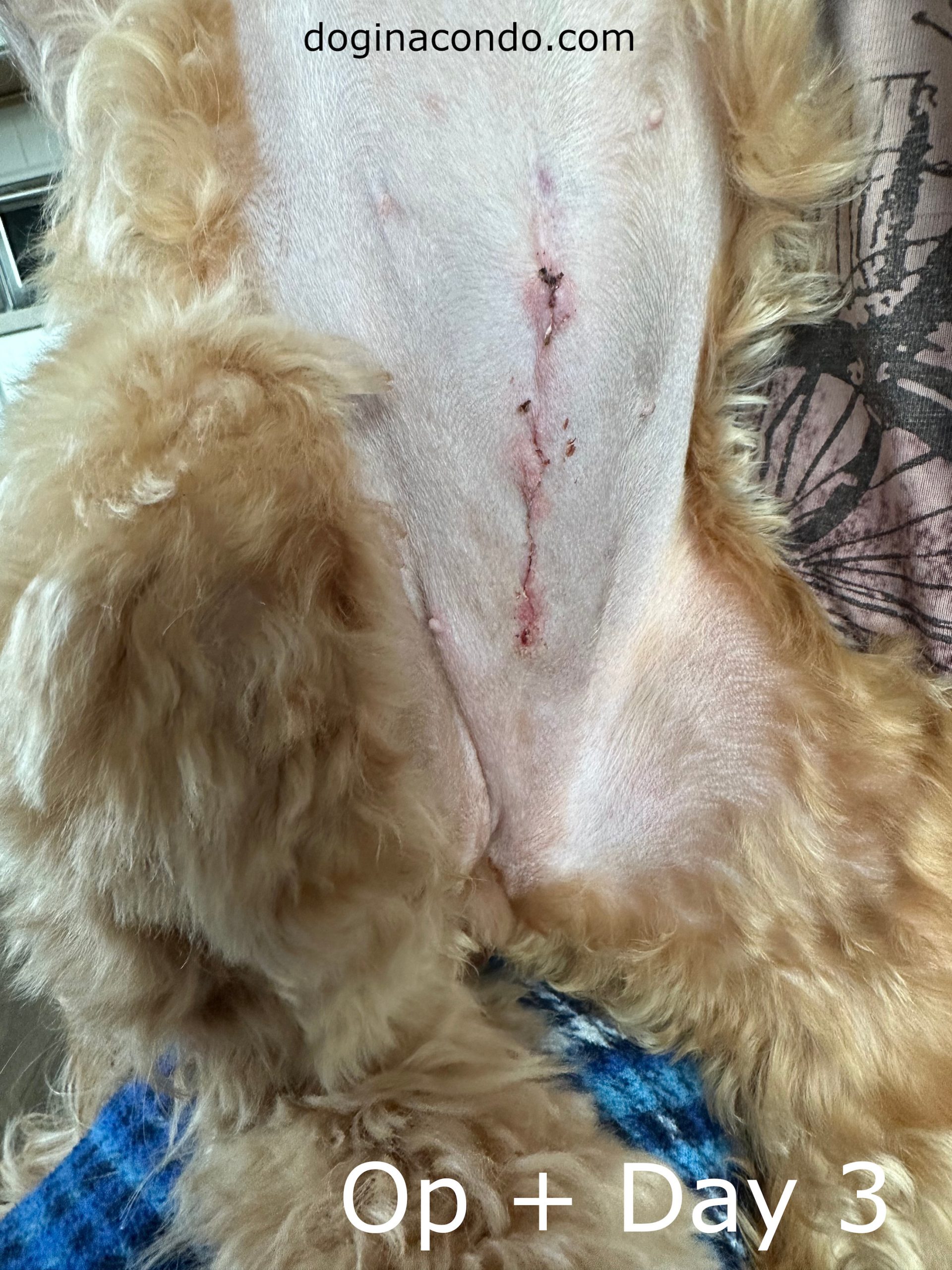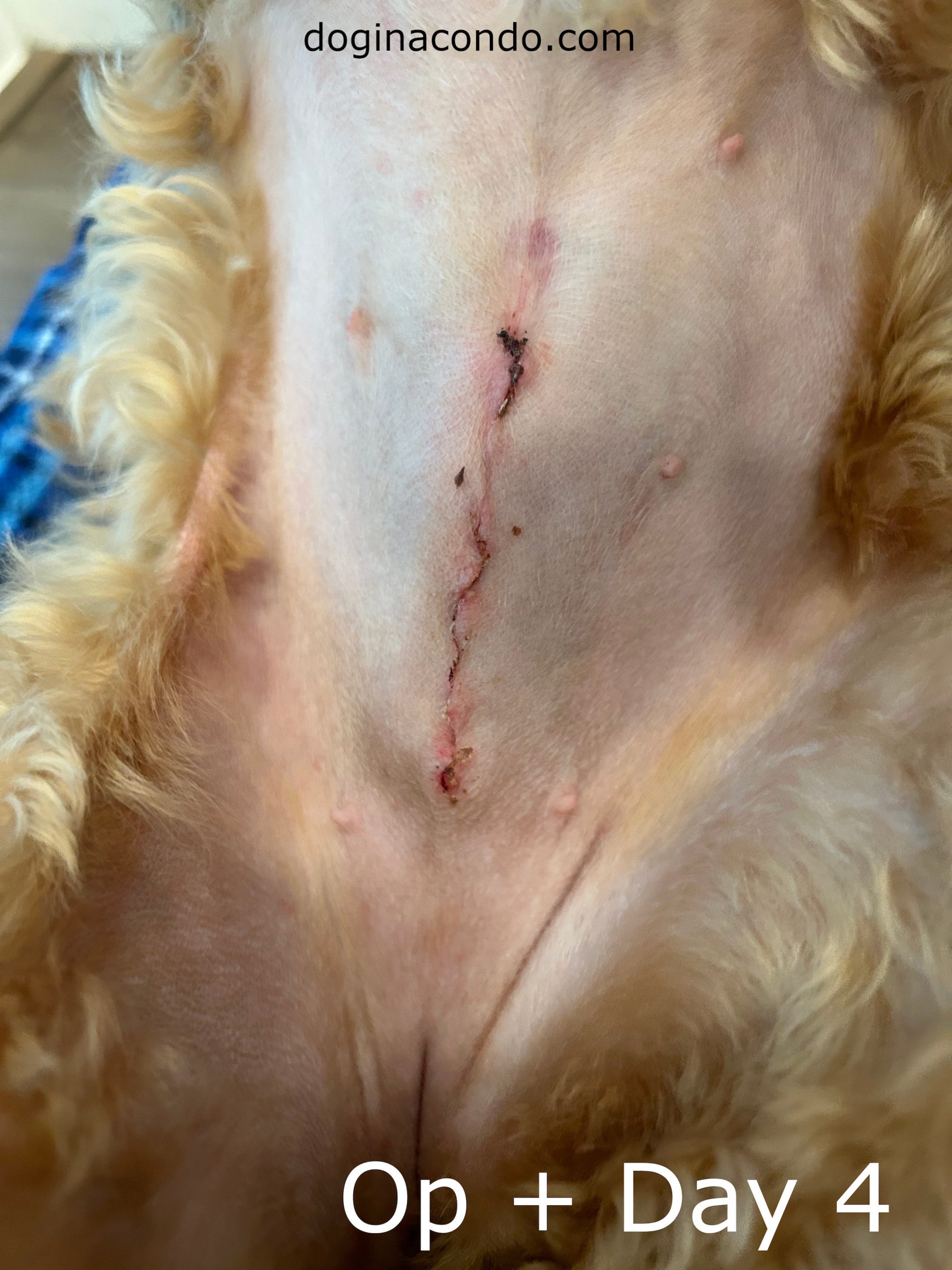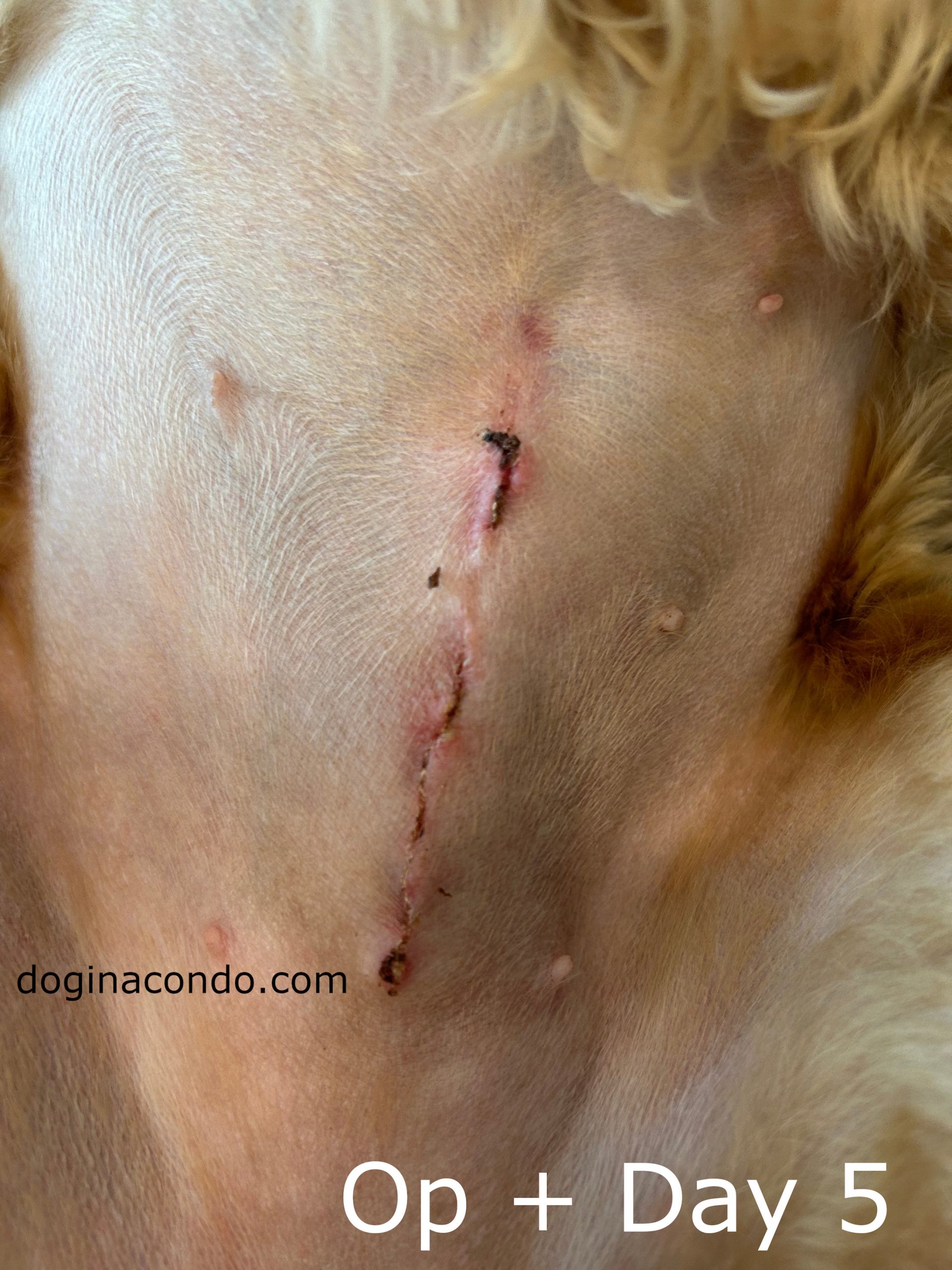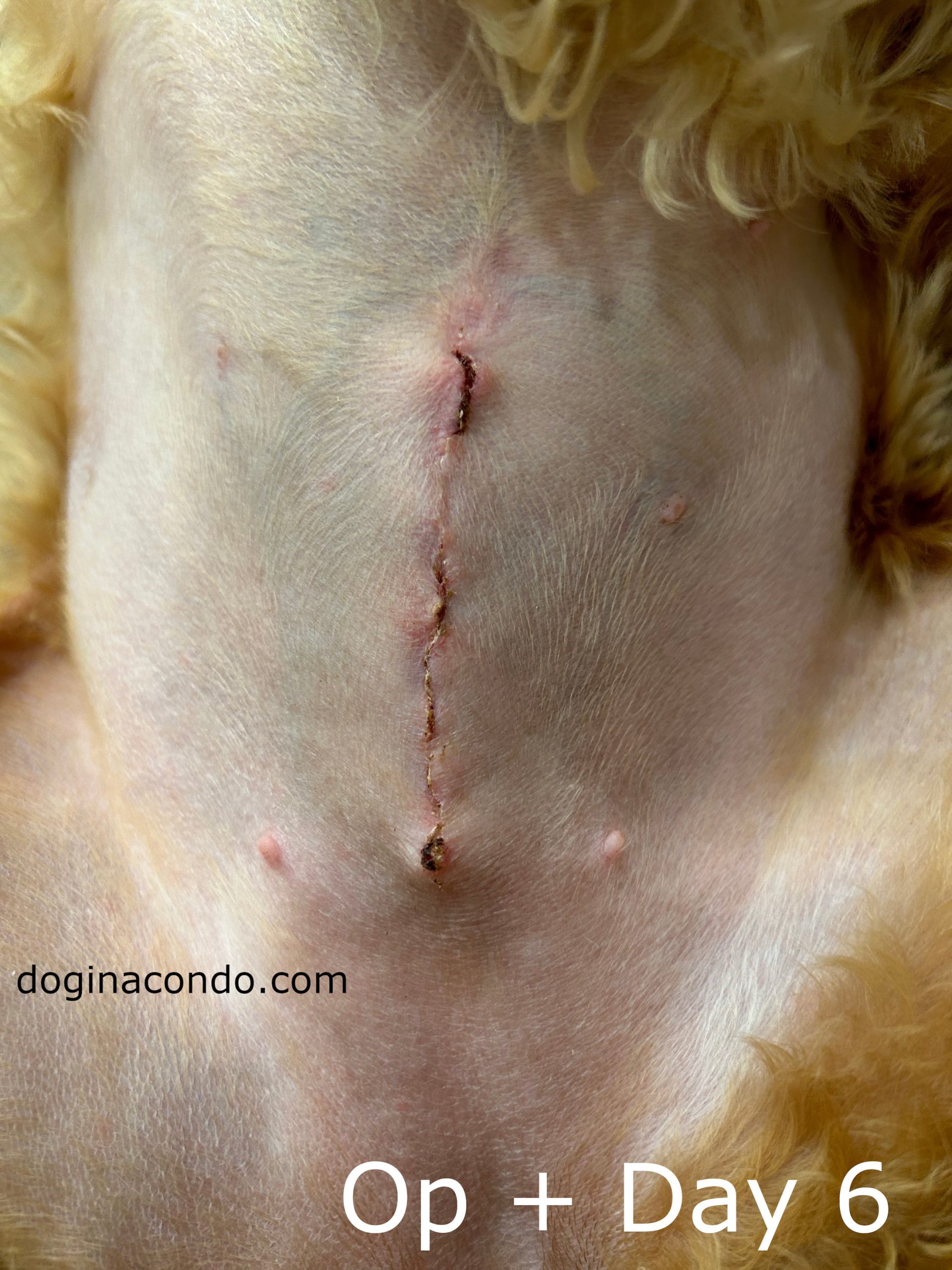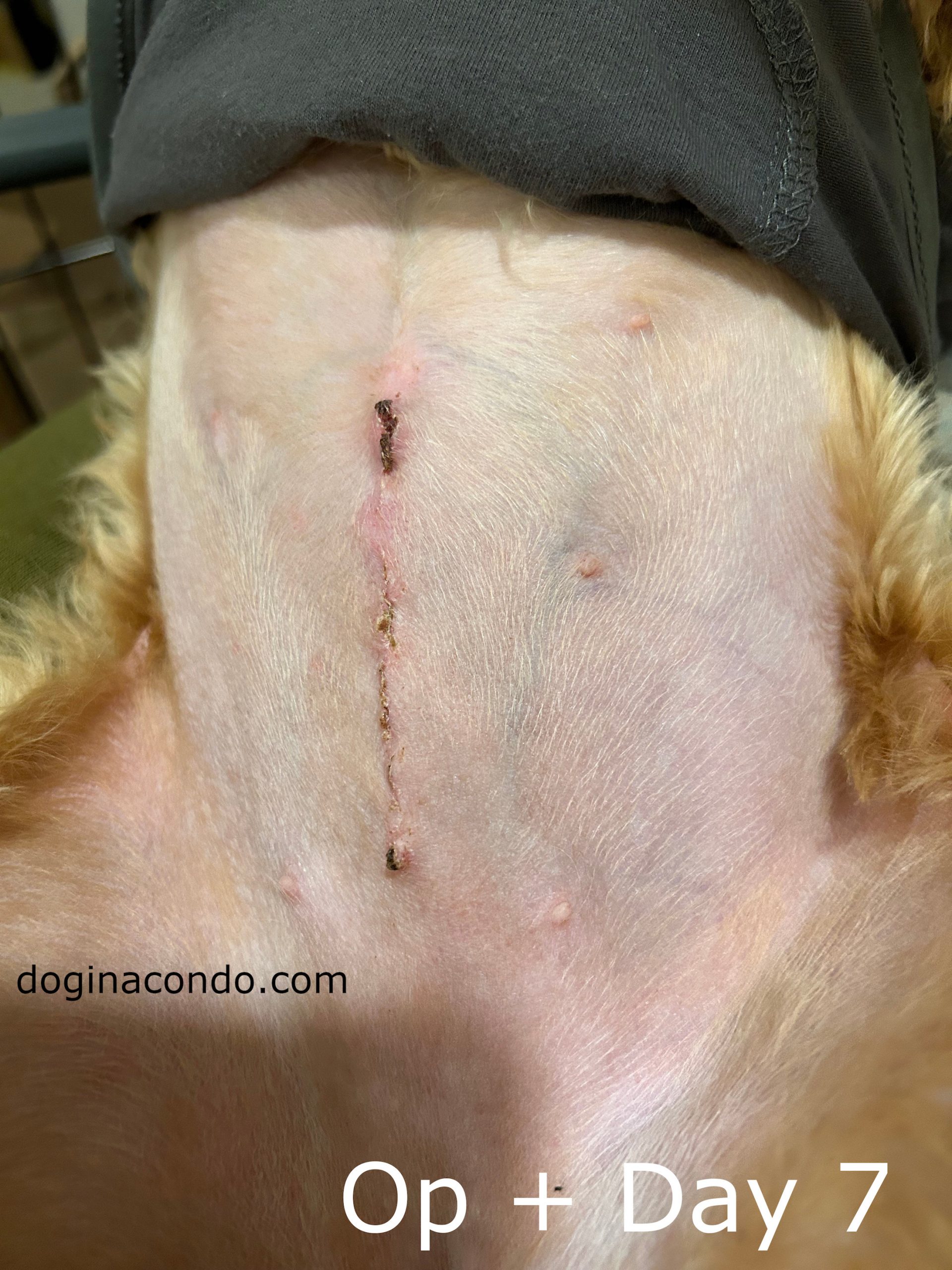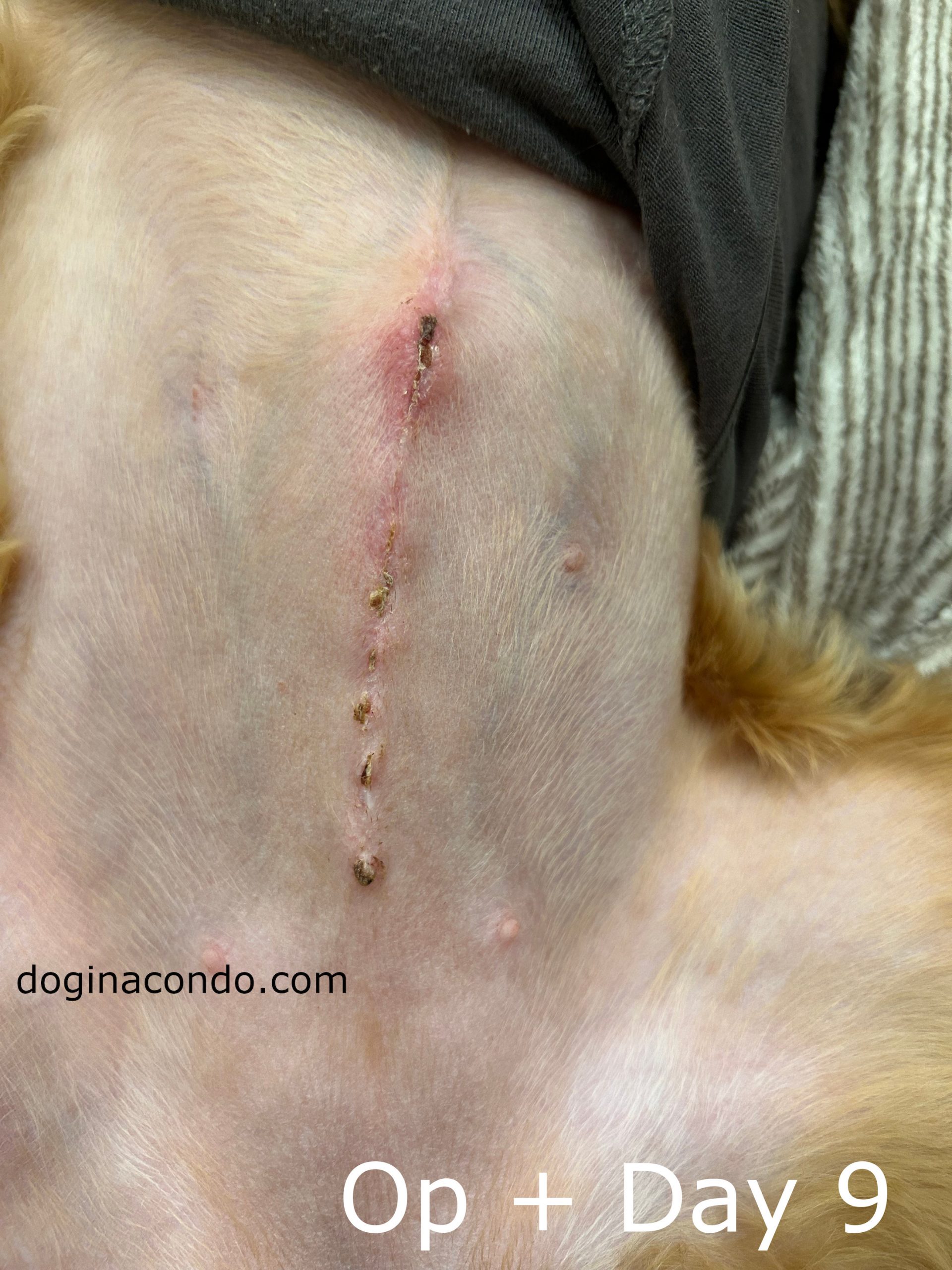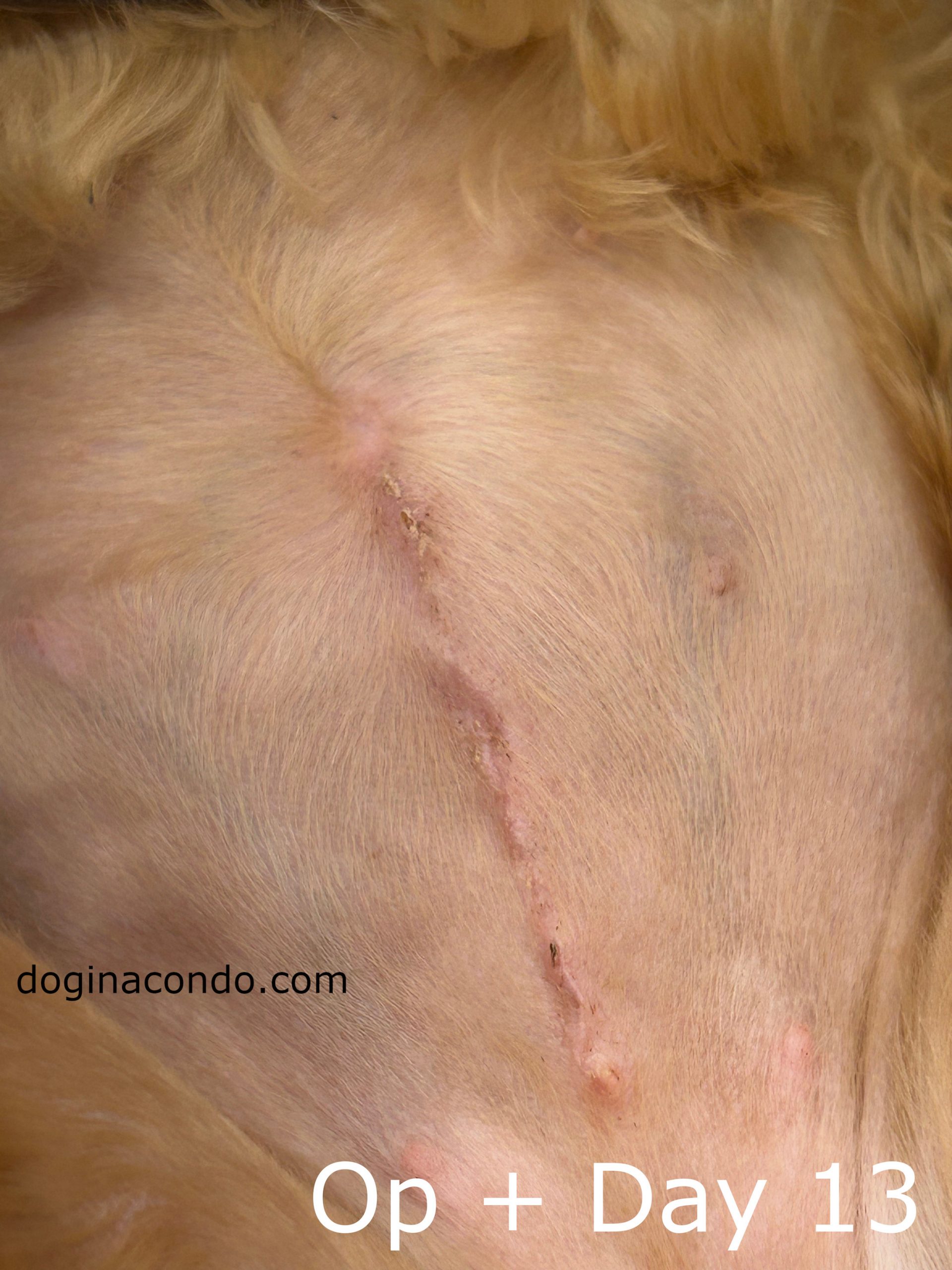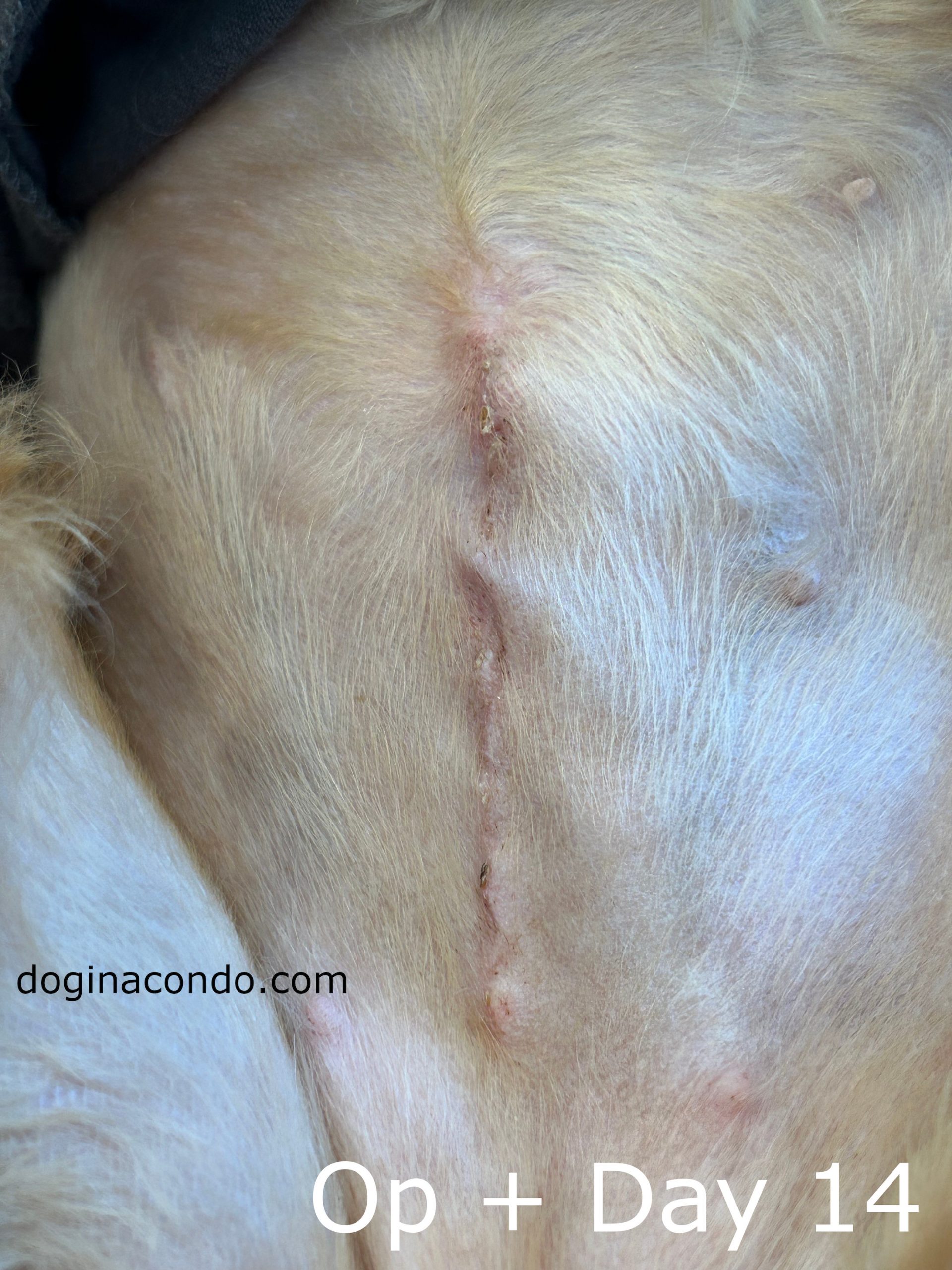14 days ago our dog, Mocha, got spayed. We understood it was invasive, though routine, procedure, and that it requires at least 2-week recovery window to make sure the suture is healed. This means no running, no jumping / climbing, no playing. We arranged for her to be groomed before the surgery so that we don’t have to deal with a dog with too long of hair but can’t be brought to the groomer.
Our vet said that small breed dog like her can be spayed earlier than larger breed dog. We went with her recommendation in terms of timeline. We decided we were going to spay her because we want to be a responsible dog owner. By spaying her we eliminated the chance of accidental litters (ethical and financial issue) and eliminated the possibility of mammary cancer, along with other fatal health problems such as pyometra, etc.
This post includes how we prepared for the surgery, and her suture progression, almost daily.
Spay Surgery Preparation
- We asked for price estimate for the whole surgery, and took time to understand what every line item meant.
- We got ourselves a couple of recovery / surgical jumpsuit instead of the Elizabethan Cone (aka the Cone of Shame).
- Stock up on chew toy and chew treat to keep her occupied.
- We fed her before 9pm the day before the surgery. No more food or treat afterwards. Water is available like usual.
- The day of surgery, we let her potty before we dropped her off at the vet at 8am.
- At the vet, we opted in for either Gabapentin or Tradozone to help calm her down for recovery.
- At about noon that day, the vet called to let us know that the surgery has gone well.
After Surgery
For the 14 days after the surgery, we:
- did NOT touch the suture area at all. We literally just keep it untouched, so that it’s always dry and clean.
- Sectioned off our condo so that she couldn’t get to the couch to jump up to and down from it.
- Sectioned off our hallway to discourage her running as fast as she can.
- Sectioned off the beanbag where she would enthusiastically dig.
- Observed any different behavior that might arise, and if so, we contacted the vet to consult. See “What We Should Look Out For” section below.
- kept her suture dry and clean. We didn’t walk her because we had a lot of storm in this period.
- On the day of the surgery, we fed her about half of her daily portion; the same with water. This was as per the vet’s suggestion.
What We Should Look Out For
Our vet says the following should trigger a consultation with the vet.
- Lack of appetite / eating habit not returning back to normal starting the day after the surgery.
- Not drinking the usual amount starting the day after the surgery.
- Not going to potty normally starting the day after the surgery.
- Weird color / liquid (e.g: pus) / odor coming out of the suture. Some redness is normal.
- Suture opening up.
Our Observation
- On the day after the surgery, she was really sleepy. She slept most of the time.
- The 2 mornings after the surgery, she didn’t sleep through the night. She had to get up to go potty. She usually slept through the night. Since her crate is in our bedroom, we heard her whine to go potty, so we caught it.
- The day after the surgery, her appetite came back. She also drank as usual. Stool frequency and amount went back to normal 2 days after the surgery.
- For about 5-6 days, she urinated more often than usual. We let our vet know but we waited and after 6 days it went back to normal.
- There was one time when her stool was loose (but not liquid). The vet told us an occurrence about 1-2 days after the surgery is normal, as it could be the side effect of the anesthesia.
- She was more clingy and cuddly during the recovery.
- The chew treat we got her really helped occupy her a lot.
- On day 5 we needed to get the Elizabethan Cone because she chewed a small hole on the belly part of the surgical jumpsuit. Concerned that she might chew through the clothing, we went to the vet to get a fitted cone for her.
Suture Progression
We share this because we understand “some redness is normal” is not very descriptive. We were lucky that she recovered without any complication whatsoever, so we thought we’d include what kind of redness is considered normal. Today we have the okay from the vet to remove the cone and go back to normalcy, based on the picture of the suture from today (2 weeks after the surgery).
The progress in 1 picture below. We saw that the scab started to form on Op + Day 3, and started to fall off on Op + Day 9. There are some flakey white dry-skin closer to the end of the recovery; we just let it be. Understandably other dogs might have a slightly different progression but probably not far off.
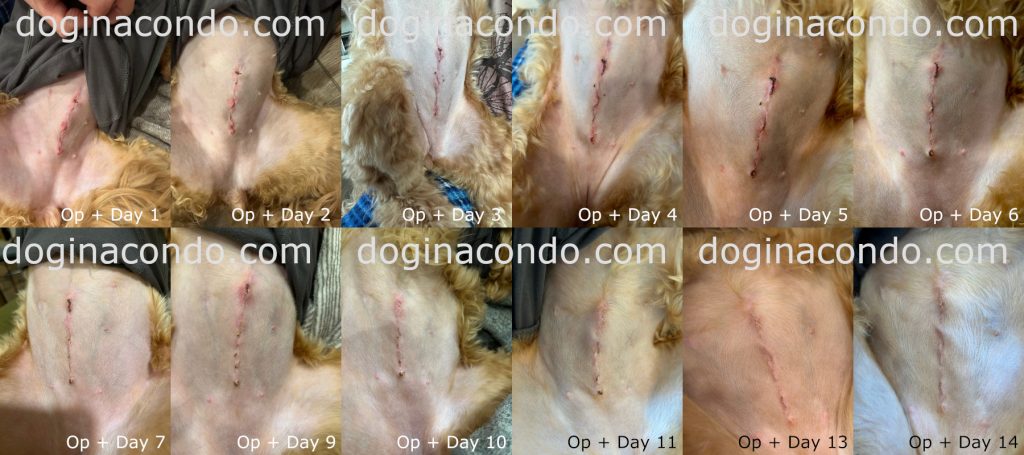
The gallery so that you can see each picture more carefully is below.
